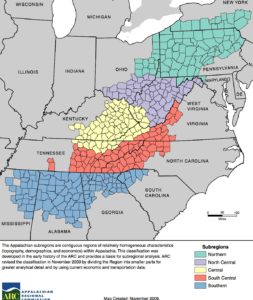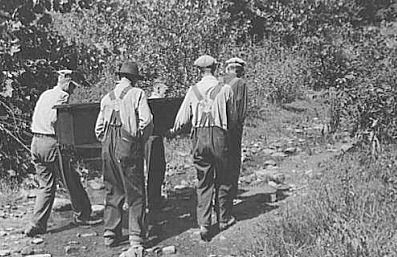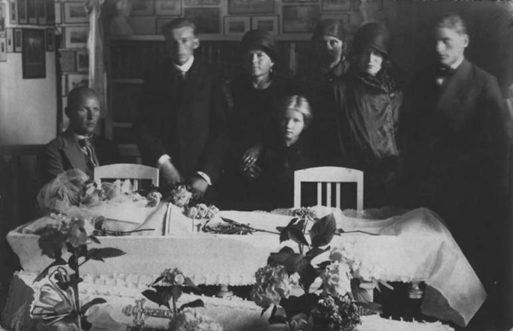
It can be difficult to define the region of Appalachia or South Appalachia, but for our purposes we’ll look to the Appalachian Regional Commission, which defines it as 420 counties spread out across parts of Alabama, Georgia, Kentucky, Maryland, Mississippi, New York, North Carolina, Ohio, Pennsylvania, South Carolina, Tennessee, Virginia and all of West Virginia.
Immigration to the isolated, high mountain ridges of these areas began in the 18th century. Tough, self-sufficient Scots-Irish came to farm the rocky terrain and, over time developed a distinct language, heritage and culture based in their Old World traditions and New World existence.
The Burial Practices of South Appalachia
The traditional burial practices of South Appalachia showed a deep sense of respect and dignity for the dead and for each other. Personalized, hands-on care was of utmost importance as the family came together to care for the person who died, and the community came together to care for the family.

Men in Appalachia carrying a coffin
Credit: appalachianhistory.net
Each death was an intimate community event — a bell would toll announcing the death, chiming once for every year of the person’s life. Immediately, the community would stop what they were doing and gather to support the family. Friends would bring food, and the men would dig a hole for the grave. A coffin would be made from a tree trunk (later to be replaced by a plain wooden box made of poplar, pine, oak or chestnut) and depending on the area, lined with a quilt or other material.
Taking Care of the Body
Back then, there was no embalming or preservation of the body, so things happened quickly. The person who died would be washed by the family and dressed in his or her best attire (usually decided on before death). The person would then be “laid out” onto a cooling board (or laying board, which could be a table, door, ironing board, or other large, flat household item). Then, they would tie the body down to keep it straight.
Silver coins would be put on the eyes to keep them closed, and towels soaked in soda water, camphor, or aspirin and water would be placed over the face in an attempt to keep the skin from becoming discolored.
The Sitting Up & Burial
Later, the person would be placed in a wooden coffin for the “Sitting Up” (the Appalachian wake). The community would bring more food and join the family to sit with the body, remember the dead, sing, eat, support each other and grieve. This would typically last until midnight (but close family friends would often arrive at the time of death and stay a few days after the funeral to help clean up and transition the household).

Sitting Up with the dead
Credit: candidslice.com
The funeral service and burial typically happened the day after the Sitting Up. The body would be loaded into a wagon, and mourners would walk behind the wagon dressed in black. After the service — which usually consisted of a preacher praying and reading from the Bible — friends and family would be able to walk by the coffin, view their loved one for the final time, and place a personal item such as tobacco, pipes, weapons, jewelry or toys inside the coffin.
The coffin would be lowered into the ground, and together, the onlookers would begin filling in the grave. Only when this task was complete would the funeral be considered complete.
How Have Burial Practices of South Appalachia Changed?
Social interaction and community remain the cornerstone in modern-day Appalachian burial customs, but the hands-on, deeply personal participation in the handling and burial of loved ones has changed with time. According to 2014 research by Donna W. Stansberry, the introduction of modern funeral practices has had a significant impact: Things, such as cleaning the body, laying the person out, “sitting up,” building the casket, and digging the grave, are no longer done completely (and free of charge) by friends, family and neighbors.
That being said, there is a renewed interest in green burial practices and home funerals (I even recently wrote a review of “The Green Burial Guidebook“), which share many principles with the traditional burial practices of South Appalachia. I believe this movement back to green burials will mean that the intimate, community-oriented elements of Appalachian burial practices won’t be lost.

 “Sitting Up” and Other Burial Practices of South Appalachia
“Sitting Up” and Other Burial Practices of South Appalachia


 How Dare You Die Now!
How Dare You Die Now!
 Debating Medical Aid in Dying
Debating Medical Aid in Dying
 “Help Me, Helen”
“Help Me, Helen”














